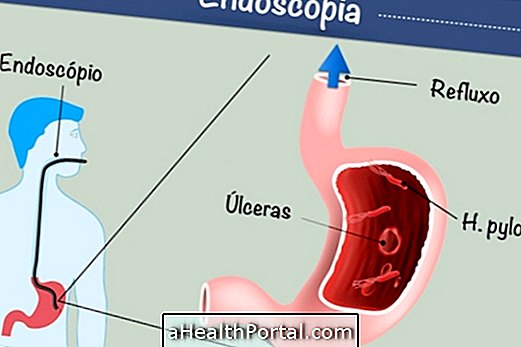The exercises for bedridden people should be done twice a day, every day, and serve to improve the elasticity of muscles and also facilitate movement of the joints, avoiding their atrophy. In addition, they improve blood circulation by preventing decubitus ulcers, also called bedsores.
The bedridden patient must do both daily breathing exercises and exercises to mobilize or strengthen the joints and muscles, always according to their possibilities. When the patient is strong and able to sit or stand, he or she may perform the exercises on his own, supervised by a physical therapist, nurse or caregiver, but when he is unable to move alone, the accompanying professional should help the exercises, holding on your legs and arms, according to need.
The exercises should be performed slowly, respecting the limits of the bedridden and to motivate him to perform the exercises should be praised each time he perform the movement correctly, looking into his eyes, and when he has difficulty performing the exercise is not appropriate to criticize or treat you badly, because this negative attitude will further undermine your willingness to participate and fight for your recovery.
Motorized exercises for bedridden
Some great workouts for bedridden people are:
Legs and feet
- With the patient lying on his belly up, see if he can move his ankles from side to side and top to bottom as if he were doing the 'ballerina's foot' movement. Each movement should be performed 3 times with each foot;
- While lying on your belly up, bend and stretch your legs 3 times in a row, with each leg;
- Lying on his belly up and legs bent. Opening and closing the legs, pushing and pulling one knee away from the other;
- From belly up and with leg stretched, lift leg up, keeping knee straight;
- Belly up and with leg stretched, open and close the leg, outside the bed;
- Bend your legs and try to lift your butt off the bed 3 times in a row.
Arms and hands
- Open and close your fingers, open and close your hands;
- Rest your elbow on the bed and move your hands up and down and from side to side;
- If the patient is able to move his arms, ask him to bend his arm, trying to place his hand on his shoulder 3 times in a row, with each arm;
- With the arm straight, ask him to raise his arm up, keeping the elbow straight;
- Keep the arm standing and stretched along the body and make the opening movement of closing the arm by dragging the arm on the bed;
- Make a shoulder-twisting motion, as if you were drawing a large circle on the wall.
Breathing exercises for bedridden
If the bedridden patient is able to get out of bed, he or she can perform these breathing exercises sitting in bed or standing up. The exercises are:
- Take a deep breath and let the air out slowly by 'pouting' with your mouth 5 times in a row;
- Take a deep breath as you raise your arms and release the air as you lower your arms. To facilitate you can do with one arm at a time;
- Stretch your arms forward and touch your palms together. Take a deep breath while making a cross-opening arm. Release the air as you close your arms and again touch your palms 5 times in a row.
- Fill half of a 1.5-liter bottle of water and put a straw. Breathe in deeply and let the air through the straw, making balls in the water, 5 times in a row.
These are just a few examples of exercises that a bedridden can do alone or with help, but a physiotherapist can indicate other exercises more appropriate, according to the patient's need, especially when the bedridden can not perform the movements alone due to lack of strength in the muscles or when there is some neurological change involved, as it can happen after a stroke, myasthenia or tetraplegia, for example.
When not doing the exercises with the bedridden person
It is contraindicated to do the exercises when the person is in bed:
- He has finished eating because he may vomit;
- You have just taken some medicine that causes drowsiness.
- You have a fever because the exercises may increase the temperature,
- You are high or deregulated because you may go up or
- When the doctor does not authorize for some other reason.
One should try to do the exercises in the morning when the patient is well awake and if the pressure rises during the exercises one should stop the exercise and do the first breathing exercise until the pressure returns to normal.
See other care for the bedridden person:
- How to Care for a Bedridden Person
- How to become a bedridden person



























